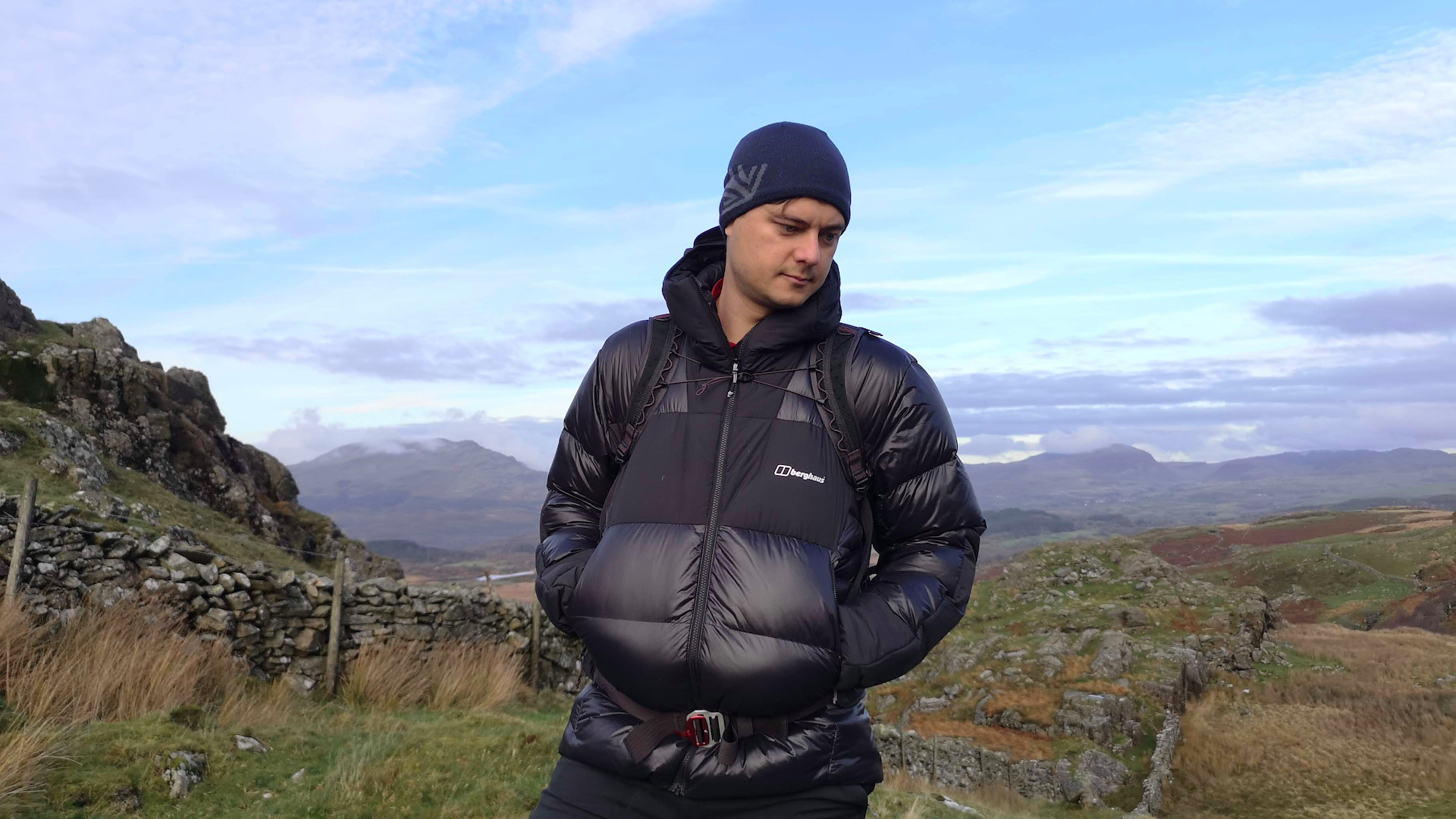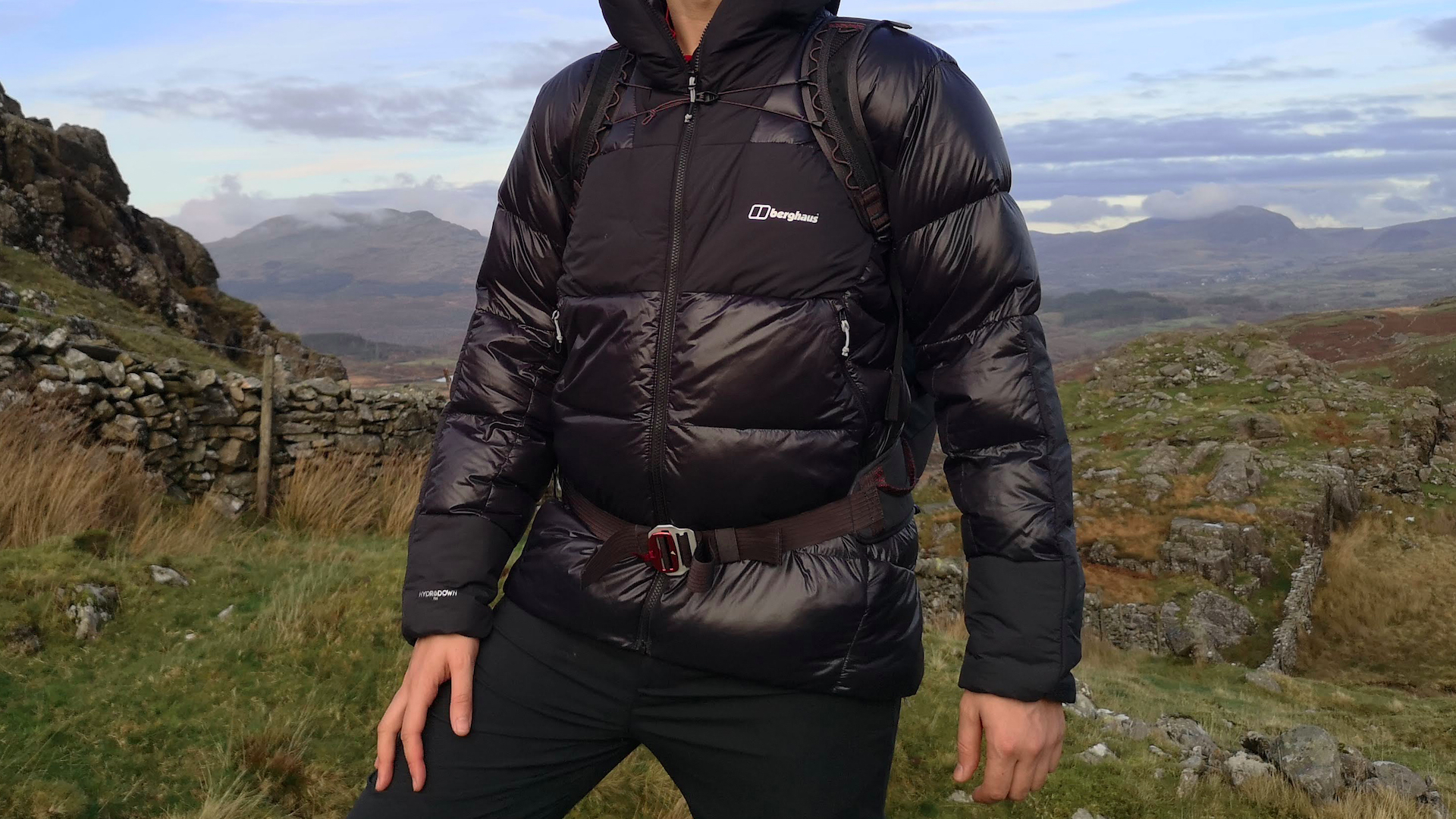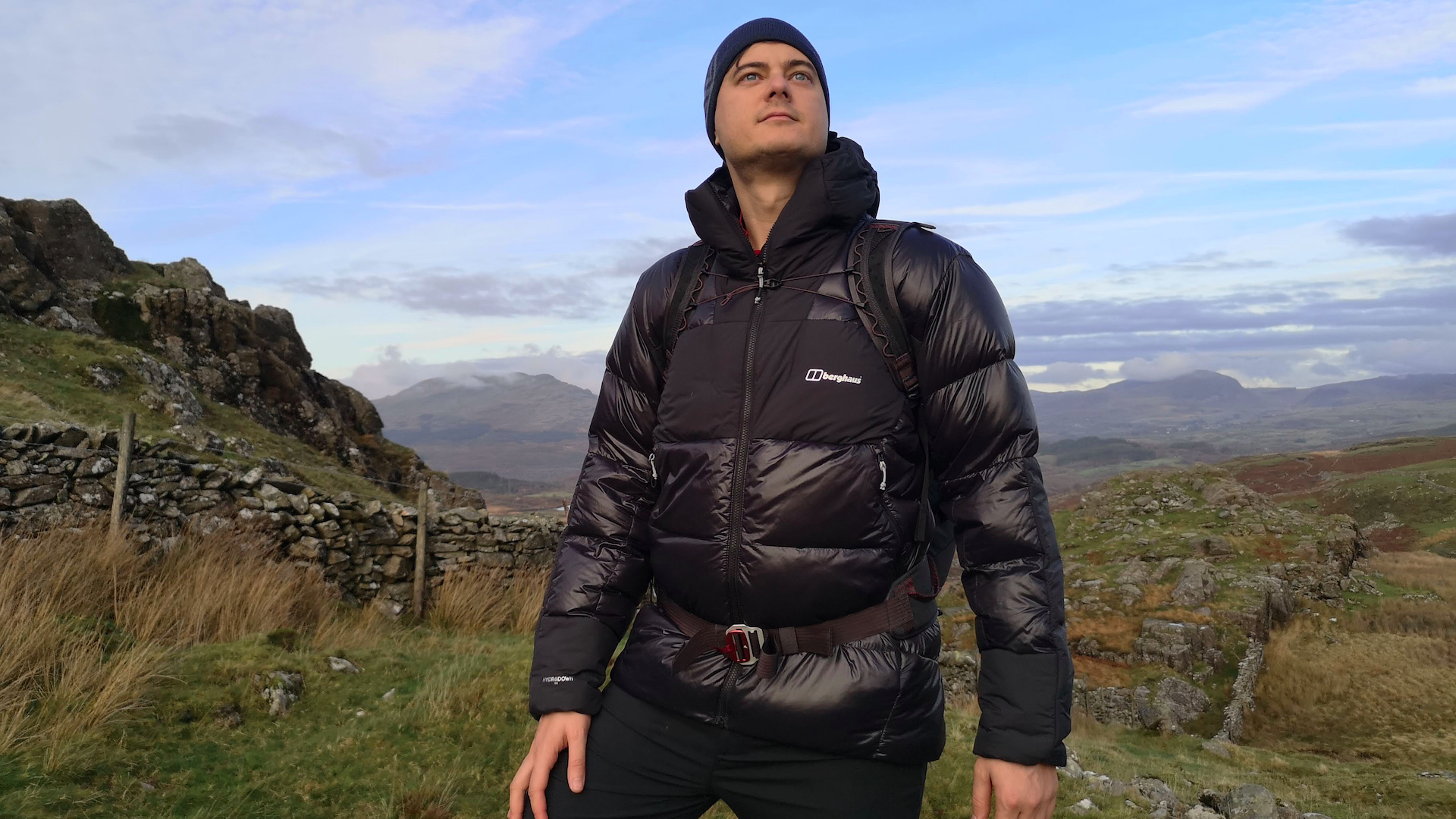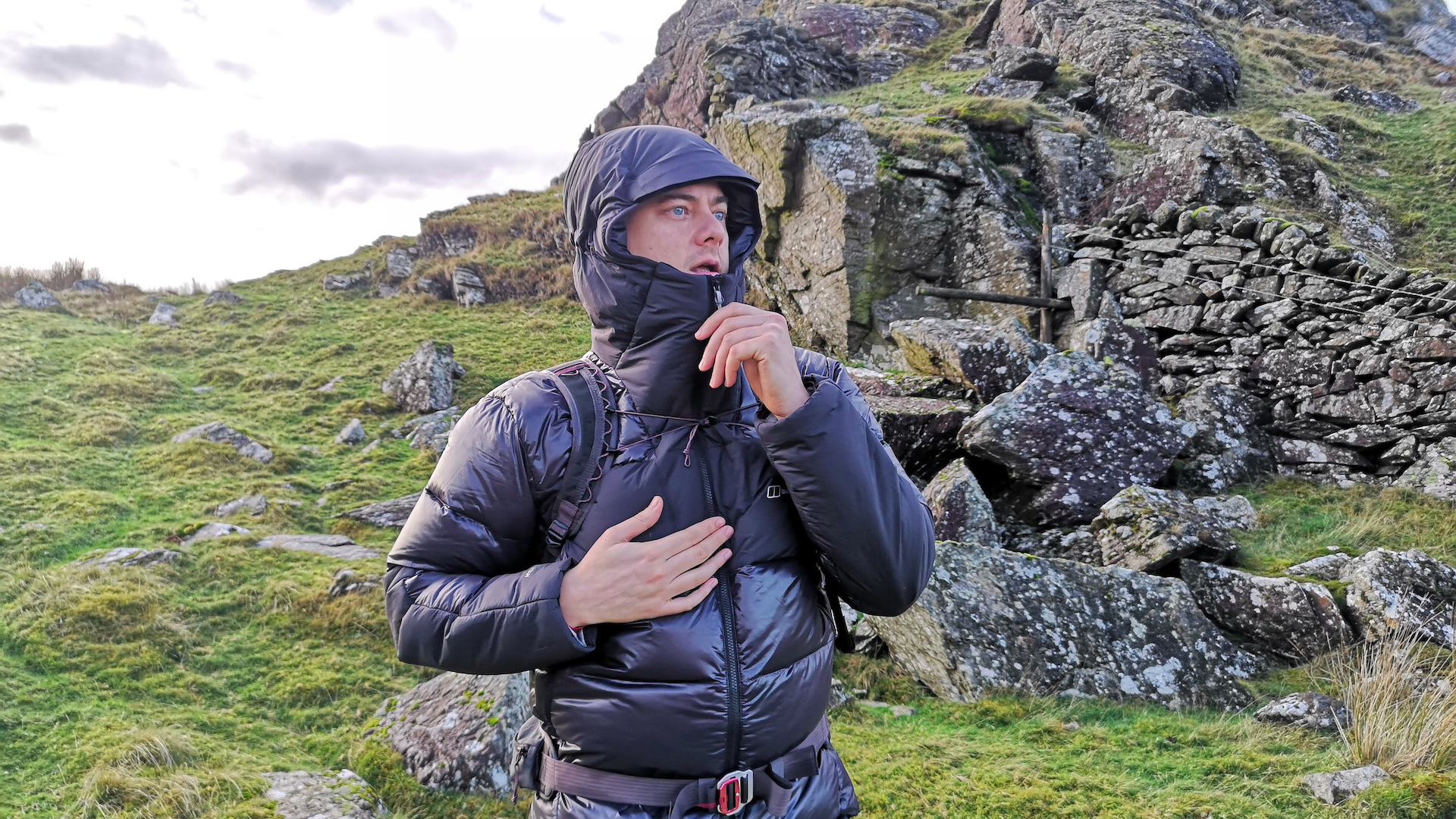Advnture Verdict
With plenty of lofty 700 fill power down housed in its chunky baffles, this jacket undoubtedly holds its own in the warmth stakes, even in temperatures below freezing. It also has some added extras that boost warmth even further, as well as improving performance in damp conditions. Downsides? It’s a bit hefty and bulky to stuff in a pack.
Pros
- +
Warm
- +
Good hood
- +
Moisture-resistant fill
Cons
- -
Not the lightest
- -
Not the most packable
- -
Slightly baggy cuffs
You can trust Advnture
Berghaus Urban Arkos Reflect Down Jacket: first impressions
The chunky Berghaus Urban Arkos Reflect Down Jacket was originally released back in winter 2021 as a high-performance cold-weather layer. It certainly has the technical chops to cope with sub-zero conditions.
Firstly, it’s stuffed with a very generous quantity of 700 fill power hydrophobic duck down, combined with zoned panels of synthetic fill in a clever body-mapped construction.
• List price: $325 (US) / £260 (UK)
• Weight: 750g / 1lb 10oz
• Materials: 700FP 90/10 hydrophobic RDS-certified Hydrodown duck down with body-mapped Hydroloft Elite synthetic fill (containing 50% recycled polyester) and Reflect mesh inner, Shell bluesign-approved ripstop nylon with PFC-free DWR
• Sizes: Men’s XS-3XL; Women’s UK 8-20
In addition, the Arkos incorporates heat-trapping Reflect technology. This is an ultralight, highly breathable mesh stitched inside the jacket, which (according to the brand) can add up to 20% additional warmth. Berghaus have been using Reflect in various models of their insulated jackets for a few seasons now. Rival brands have similar technologies, including Rab TILT and Columbia Omni-Heat, and the tech’s increasingly widespread adoption across the industry suggests it genuinely works.
This winter, Berghaus’ marketing team has clearly got hold of the Arkos Reflect jacket and refocused it as a bit of striking yet functional streetwear, perhaps aiming to cash in on Gen-Z’s love for technical outerwear or the gorpcore trend. So, rather than highlighting its mountain-ready credentials, the brand is calling out the “contrasting fabrics and extra padding that make for a statement look”, with “high shine and matte fabrics to stand out on the street.”

Of course, wherever you wear it, this is the same jacket. For some it might have crossover appeal from street to summit: from a style perspective, the jacket’s chunky, oversized baffles are bang on trend, offering a boxy and eye-catching silhouette. But in a practical sense, larger baffles allow for more down fill, while also giving it more space to loft and reducing stitching lines. Those are all positives for warmth. On the other hand, bear in mind that bigger baffles tend to give more space for the down to shift around inside the jacket, which can lead to clumping. Luckily, you can usually get around this potential problem by shaking it out fairly regularly.
As for those contrasting fabrics, they certainly do add that high gloss sheen that is undoubtedly in vogue right now. But again, there’s a reason for their use: the shiny stuff is a lightweight micro-ripstop nylon, while the matte panels across the hood, cuffs and forearms are made from a slightly heavier but tougher face fabric designed to improve resistance to abrasion in those high-wear areas.
Berghaus Urban Arkos Reflect Down Jacket: on the trails
First up: full disclosure. This reviewer is a fairly solitary hillwalker by habit. He is pushing 40 and lives in a relatively remote part of the Snowdonia National Park in North Wales. It’s one of the UK’s hillwalking hotspots for sure – but seething metropolis it ain’t. Urban chic is not top of the list of wardrobe priorities here. We do have bitterly cold winters though, especially in the mountains. So, I can certainly comment on the technical capabilities of the Arkos jacket, but not perhaps so authoritatively on its street appeal…
However, from a purely functional standpoint, there’s lots to like with the Berghaus Arkos Reflect jacket. The performance of many down jackets is often compromised in damp conditions, but that’s less of an issue with the Arkos Reflect. That’s chiefly thanks to the hydrophobic down fill, augmented by the considered placement of synthetic insulation in areas that are particularly prone to moisture. The outer fabrics are also treated with a PFC-free durable water repellent (DWR) finish. All in all, it’s a jacket that will deal with drizzle and other light precipitation far better than most down puffers.

It’s also very warm, thanks to its high fill weight and 700 fill power down insulation. The body-mapped construction is also designed to place more down where you need it, namely around the core. But this jacket’s real silver lining is its, er, silver lining – namely, that Reflect mesh, which boosts warmth by reflecting your own body heat. Though it’s hard to definitively assess its effectiveness, this jacket does feel noticeably warmer than other jackets we’ve tested with a similar fill power and fill weight, like Montane’s Janhukot.
Other features of the Arkos Reflect further add to an overall sensation of toasty, protective warmth. We particularly liked the microfleece-lined handwarmer pockets, as well as the big, well-insulated hood and the double baffle either side of the main zip. This creates a very effective seal to keep out drafts. Only the slightly loose, non-adjustable cuffs let things down a little.

In fact, the Arkos Reflect’s only real drawbacks are its inevitable weight and bulk. It weighs in at 750g in a men’s size L, which means that this isn’t the lightest or most packable layer. It also lacks a pack pocket or stuff sack, which further limits overall compressibility. It’s really a jacket that you want to be wearing rather than carrying in a pack – so in that sense, it’s better suited to navigating chilly city streets rather than high-level mountain routes.
On the other hand, it is extremely warm – certainly warm enough for exposed summits and ridge lines. Ultimately, there’s a trade-off to be made here. The only way you’d realistically get a similar degree of warmth with lower weight and bulk is by looking at a premium 750FP+ down jacket like the Patagonia Fitz Roy Down Hoody (RRP $399 / £380) or the Klattermusen Bore 2.0 (RRP $790 / £650), both of which are considerably more expensive.
An outdoors writer and editor, Matt Jones has been testing kit in the field for nearly a decade. Having worked for both the Ramblers and the Scouts, he knows one or two things about walking and camping, and loves all things adventure, particularly long-distance backpacking, wild camping and climbing mountains – especially in Wales. He’s based in Snowdonia and last year thru-hiked the Cambrian Way, which runs for 298 miles from Cardiff to Conwy, with a total ascent of 73,700 feet – that’s nearly 2½ times the height of Everest. Follow Matt on Instagram and Twitter.


